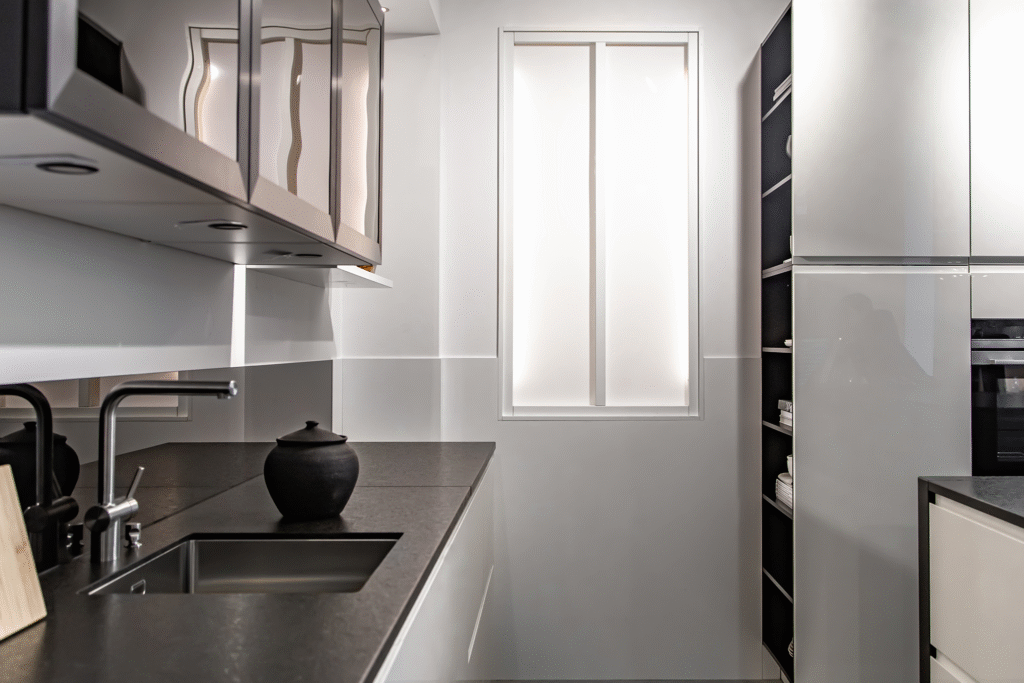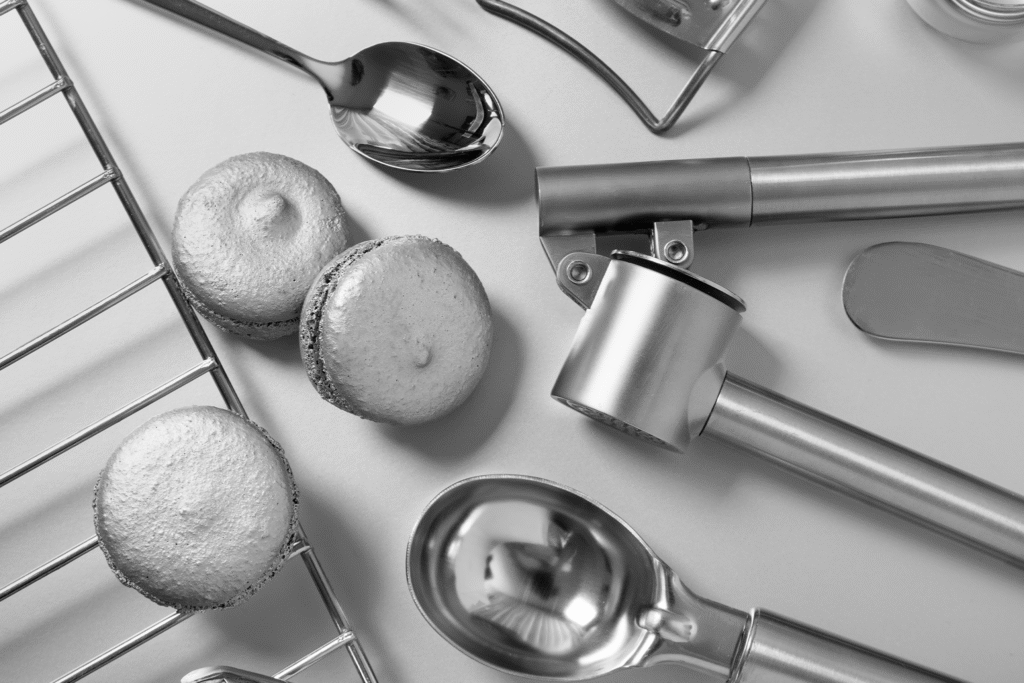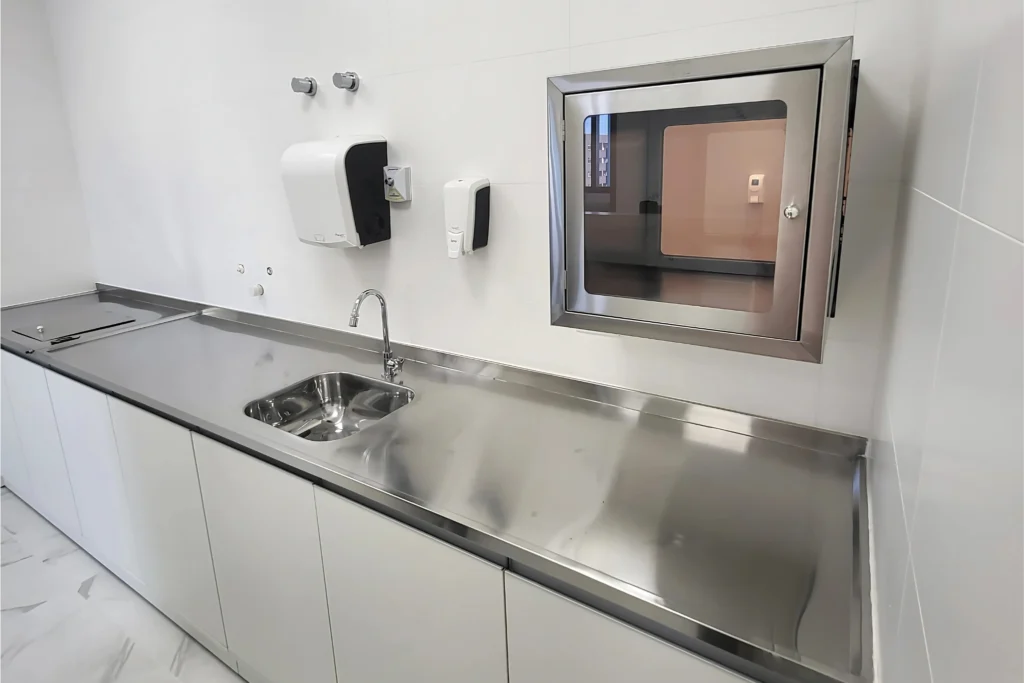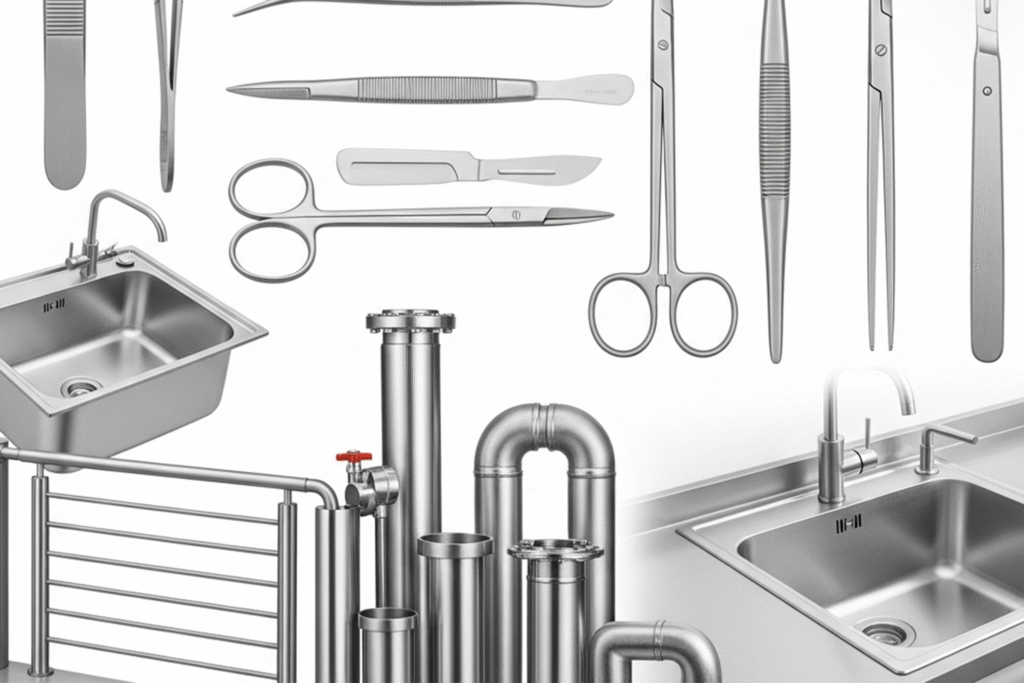6 Advantages of Stainless Steel Furniture: Discover the Benefits That Transform Spaces!

When it comes to equipping industrial kitchens, hospitals, laboratories, or veterinary clinics, stainless steel furniture stands out as the safest and most efficient option. Far from being just aesthetics, stainless steel brings benefits that transform any space into a more hygienic, durable, and functional environment. Hygiene and resistance: the foundation of choosing stainless steel The main reason to opt for stainless steel furniture is hygiene. Its smooth, non-porous surface prevents the spread of bacteria, fungi, and viruses. In addition, stainless steel does not absorb liquids or odors, which makes cleaning easier and ensures sanitized environments at all times. Thus, kitchens and hospitals can easily meet health surveillance standards. Resistance also deserves attention. Stainless steel withstands impacts, high temperatures, and heavy use without warping or cracking. As a result, furniture made from this material lasts much longer and reduces the need for replacements. Therefore, the initial investment becomes more economical over the years. Low maintenance and professional aesthetics Cleaning stainless steel is practical. so use neutral detergent and a soft cloth to restore the material’s shine. Unlike other finishes, it does not require constant polishing or special products, which saves time and reduces costs. In fact, this ease allows furniture to remain ready for intensive use at all times. Stainless steel also adds aesthetic value. Its modern finish conveys organization and professionalism, reinforcing the image of quality in any kitchen, laboratory, or clinic. Consequently, clients, inspectors, and staff perceive the environment as safe and reliable. Versatility and sustainability for the future Another advantage is flexibility. Stainless steel can be shaped into countertops, tables, carts, and shelves that make the most of every available space. This way, the environment becomes more efficient and adapted to the team’s routine. In addition, versatility allows for custom projects for different areas. Sustainability is another point that cannot be ignored. Stainless steel is 100% recyclable and retains its properties even after reuse. Above all, since it has a long service life, it generates less waste and contributes to more responsible consumption practices. Choosing stainless steel furniture means combining hygiene, resistance, practicality, and professional design in one decision. However, the greatest advantage is that this choice adds value in the present and prepares spaces for the future.
Why Use Stainless Steel Equipment for Industrial Kitchens?

In the fast-paced environment of an industrial kitchen, every detail makes a difference. Choosing equipment and furniture is not just about aesthetics: it is a strategic decision. Stainless steel has become the foundation of professional kitchens because it combines impeccable hygiene, extreme durability, and operational efficiency. If the goal is to have an environment that withstands time and the strictest inspections, stainless steel is the definitive answer. Hygiene, safety, and resistance: the essential trio of stainless steel The main advantage of stainless steel in industrial kitchens is food safety. Its smooth, non-porous surface prevents the proliferation of bacteria and microorganisms, unlike materials such as wood or common plastics. In addition, stainless steel does not absorb liquids or odors, drastically reducing the risks of cross-contamination. Another advantage is ease of cleaning. Stainless steel equipment withstands the strongest chemicals used in frequent disinfections to meet sanitary regulations. An industrial kitchen countertop or a stainless steel sink can be sanitized in minutes, keeping the environment always ready for food preparation. This resistance is also reflected in durability. Stainless steel does not rust in humid or acidic environments and withstands impacts, high temperatures, and intensive use without deforming. That is why equipment such as hoods, industrial tables, and stainless steel shelves have a long lifespan, reducing maintenance and replacement costs. Operational efficiency and professional aesthetics Beyond resistance, stainless steel improves workflow. Ergonomic countertops, sinks with multiple bowls, and robust transport carts are designed to make the team’s routine easier. The use of furniture with casters, for example, speeds up equipment movement and reduces physical effort in repetitive operations. And the aesthetic factor cannot be ignored. The modern and clean appearance of stainless steel conveys organization and professionalism, reinforcing the image of quality in your kitchen to clients, inspectors, and partners. In summary, investing in stainless steel equipment for your industrial kitchen is not just a material choice, but a smart decision. Stainless steel ensures a safe, hygienic, durable, and efficient workspace — an indispensable pillar for the success of any food service business.
Pass Through Stainless Steel Clean Room: What you need to know.

Pass Through for clean rooms what is it? A stainless steel pass through for clean rooms , also known as a pass box, clean room window or pass through hatch, is an essential piece of equipment in controlled environments. But its main function is to allow the transfer of materials between clean and sterile areas, ensuring that the process is carried out safely and without risk of cross-contamination.This type of equipment is widely used in hospitals, laboratories, pharmaceutical, food and cosmetics industries, because it always aims to preserve the integrity of the environment and meet the requirements of regulatory bodies such as the Health Surveillance Agency. As such, the use of pass through is mandatory in some clean rooms. Where can cleanroom pass-throughs be used? What are the benefits of the Stainless Steel Pass Through? Installing a stainless steel pass-through has several advantages: Features and options available At Sica Inox, the Pass Through models can count on different features, so check them out below:
Surgical Steel and Stainless Steel: Unraveling the Essential Difference

Many people use the terms “surgical steel” and “stainless steel” interchangeably. However, although related, they are not the same thing. Understanding this distinction is crucial. After all, applications where hygiene, durability and biocompatibility are non-negotiable, such as in healthcare environments or the food industry, depend on this clarity. In this article, we’ll unravel the real difference between surgical steel and stainless steel, clarifying myths and facts. Stainless Steel: The Basis for Resistance and Versatility Stainless steel (or simply stainless steel) is actually a vast family of metal alloys. Its main characteristic is its remarkable resistance to corrosion. The presence of at least 10.5% chromium in its composition confers this property. When chromium is exposed to oxygen, it forms a thin, invisible passive layer on the surface of the metal. This layer acts as a protective barrier against oxidation (rust) and other corrosive agents. There are several variations of stainless steel (such as the 304, 430 and 316 series). Each one has slightly different compositions and properties. Consequently, they are suitable for a variety of uses: from domestic utensils and kitchen sinks to heavy industrial equipment and building facades. Its ease of cleaning, durability and modern aesthetics make it an extremely versatile material. It is therefore widely used in numerous sectors. To find out more about the general specifications of stainless steel, you can consult the Brazilian Stainless Steel Association (Abinox). Surgical Steel: Stainless Steel Elevated to the Medical Level The term surgical steel refers to a specific type of stainless steel. Manufacturers design and process it to meet the very high standards demanded by the medical, dental and implant industries. AISI 316L stainless steel is the best known and most widely used. The letter “L” stands for “Low Carbon”, a crucial characteristic for this application. The main difference between surgical steel and other types of stainless steel lies in its chemical composition and processing: The Essential Relationship: All Surgical Steel Is Stainless, but Not All Stainless Is Surgical The main conclusion is clear: all surgical steel is a type of stainless steel. However, not all stainless steel has the characteristics and purity necessary to classify it as “surgical”. Surgical steel is therefore a specialized version of stainless steel, optimized for the extreme demands of the medical environment. Patient safety and the integrity of the material are non-negotiable. In short, while ordinary stainless steel is excellent for many everyday and industrial applications, surgical steel is the mandatory choice for surgical instruments, orthopaedic and dental implants. It is also essential for other devices that require maximum performance in biological environments. See more: Why use stainless steel equipment for industrial kitchens?

